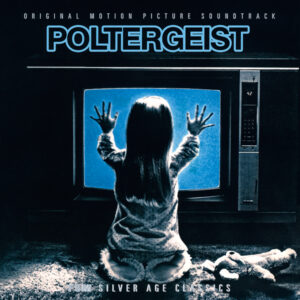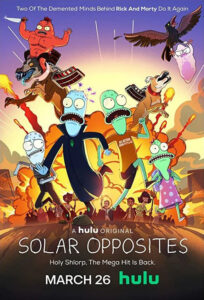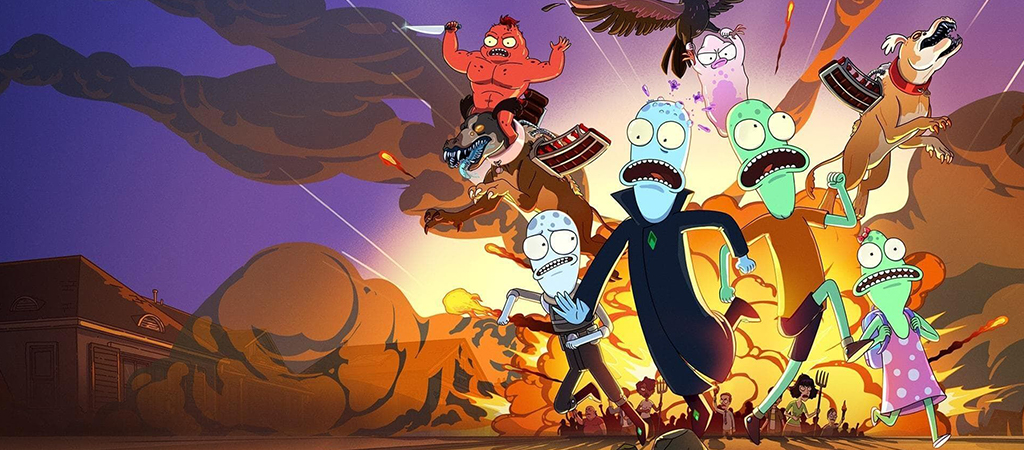You can find all my latest music, film, and book reviews in my author newsletter. For more content, upcoming releases, and exclusive offers please subscribe here and I’ll deliver my newsletter directly to your inbox once a month.
To read the exclusive first chapter of Monsters, Myths, and Microchips (A Sean Livingstone Adventure: Book 0) for free click here.
What I’m listening to…
 I just counted how many Jerry Goldsmith mp3’s I have on my MusicBee music player. 2,684. That just edges out the other fine maestro John Williams, who clocks in at 2,639.
I just counted how many Jerry Goldsmith mp3’s I have on my MusicBee music player. 2,684. That just edges out the other fine maestro John Williams, who clocks in at 2,639.
I also own dozens of Goldsmith’s original scores on CD. Of all his soundtracks I would rank Poltergeist (1982) as one of his finest achievements.
Before I move onto the highlights of this original score I’d like to reveal some interesting facts behind the making of the movie.
- The screenplay was written by Steven Spielberg and directed by Tobe Hooper, straight off the back of his directing success with A Texas Chainsaw Massacre. Spielberg produced the film and many people believe he did most of the directing as well. No question, it looks and feels like a typical 80’s Spielberg-directed film.
- The special effects crew didn’t have enough time to cast human skeleton props so they imported real skeletons from India and dressed them up to look mummified.
- When the ghost investigator pulls his face off in front of the mirror, it’s Spielberg’s hands that tear the chunks of flesh from the specially constructed model head.
- At the end of the film, the haunted family’s entire house is sucked into another dimension. The remnants of the model house used to create this effect were given to Spielberg in a perspex box as a gift at the end of filming.
Anecdotes aside, the score for Poltergeist covers every emotion possible. It’s warm, emotional, frightening, pulse-pounding, heavenly, ethereal, and triumphant. Goldsmith is a composer at the height of his powers here. The music shifts effortlessly from one emotion to the next, gently caressing us with Carol Anne’s theme, then shocking us with violent ghostly intruders.
This is one of my top 10 all-time soundtracks. The film is also a personal favorite of mine from the 80’s. Poltergeist is genre filmmaking at its best.
PS: I think Tobe Hooper directed and Spielberg did a solid job of producing.
What I’m watching…
Solar Opposites is amazing for all the wrong reasons. It’s crude humor, violent sci-fi action, and immoral alien protagonists are incredibly entertaining.
The adult animated series from Hulu centers around an alien family of Schlorpians stranded on Earth after their home planet is obliterated by an asteroid. To their disgust, Earth is overpopulated with humans.
The alien refugees Korvo, Terry, Yumyulack, Jesse, and the Pupa attempt to fit into suburbia with disastrous results. The amount of gore in episode one is enough to make Evil Dead look like Sesame Street. But don’t fear. It’s all done tongue-in-cheek and bursting with laugh-out-loud gags.
I stumbled across the series while menu-surfing on Disney+, which now has the adult content section called Star. God forbid a young child accidentally menu-surfs their way onto this series thinking it will be a cute cartoon. They will be scarred for life!
There are enough pop-culture references jammed into each 22-minute episode to keep even the most discerning geek and sci-fi nerds entertained. The series is created by Justin Roiland (Rick and Morty) and Mike McMahan (Star Trek: Lower Decks)
I have never watched Rick and Morty, but loved Star Trek: Lower Decks. Once I’ve devoured all of Solar Opposites season 2, which dropped on March 26, 2021, I’ll move on and check out Rick and Morty.
 What I’m reading…
What I’m reading…
I’m revisiting Magicians of the Gods (2015) by author Graham Hancock. This was another inspiration for my Sean Livingstone Adventure Series.
This is a sequel to Fingerprints of the Gods (1995), building on the premise that a highly advanced civilization was destroyed by a global catastrophe.
Hancock’s central argument is that fresh evidence points to a large comet strike around 10,800 BC. This theory begs an extremely basic question. If this is so, where is the crater from such an impact located?
Hancock believes a fragment from this comet hit Earth in the upper hemisphere and instantly vaporized a continent-sized glacier, preventing the creation of a deep-seated crater. This impact caused devastating floods and a rapid rise in sea-levels, an event that ties into many of the ancient flood myths.
Hancock then proposes that the survivors of this cataclysm, the Magicians, spread across the world to pass on their knowledge, linking them to the Pyramids of Giza and the recently-discovered Göbekli Tepe.
It’s a fun read and helped fuel my creativity when I was researching and writing my series. Hancock is a thorough researcher and backs up his arguments with plenty of facts and locations.
